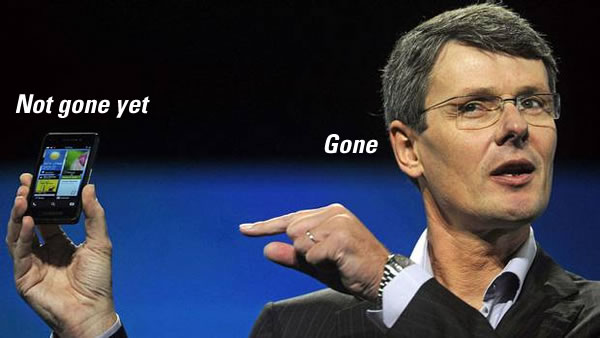
Dwight K. Schrute: Stack ranking’s logical conclusion.
Microsoft has announced that they are eliminating stack ranking, the infamous and much-maligned system that required managers doing annual reviews to place their direct reports in one of three categories or “buckets”:
- “Achieve”, into which 70% of your direct reports would go. The official description of the sort of person your supposed to put into this bucket is “Demonstrates potential at minimum to broaden in one’s role or to advance one career stage or level as a leader – either as a People Manager and/or individual contributor. Past performance suggests capability of delivering consistent and significant contributions over long-term. Competencies typically are at expected levels.”
- “Exceed”, where you’d place the top 20%. If you did particularly well that year, you’d be put into this category. The description reads: “Demonstrates potential to advance faster than average as a leader – either as a People Manager and/or individual contributor – preferably multiple levels or two career stages. Past performance suggests capability of delivering exceptional results over long-term. Competencies typically are at or above expected levels.”
- “Underachieve”, or the bottom 10%. This category comes with a set of consequences and often a lot of self-loathing and voluntary departure from the company. “Demonstrates limited potential to advance.”
Stack ranking was cited in Kurt Eichenwald’s damning article in Vanity Fair on “Microsoft’s Lost Decade” as being one of the reasons that the company, while financially successful, doesn’t define tech the way it used to. According to the article, it created situations where superstars would refuse to work on the same team, and it also incentivized teammates to compete against each other, in that sort of “I don’t have to outrun the bear, I just have to outrun you” way. I came on the team with 7 years’ worth of solo blogging under my belt and my own audience, and one way I put myself ahead was to simply outblog them — I wrote nearly 800 articles between October 2008 and April 2011. (As of this writing, I still have the most-viewed article on Canadian Developer Connection, and I left two and a half years ago.)
When chatting with former Microsofties about their former lives at The Empire, I found that most of them hated the system, saying that it rewarded those who spent more time “managing up” than getting the job done; it encouraged ass-kissing over actual productivity.
Simply put, stack ranking was creating an organization of Dwight K. Schrutes.
If you don’t believe me, then how about someone who worked at the same level as my manager, who commented on my earlier article about Microsoft’s stack ranking system?
You forgot one important aspect of the ranking process: calibration. Your manager talks about your performance in front of his peers and then together they “calibrate” how you performed relative to your peers.
This would shine a spotlight on folks who networked well, picked opportunities to “own scorecards” and exceeded them by crunching numbers and on backs of others by running “v-teams”, vs the actual do-ers and Subject Matter Experts who would do the heavy lifting. Extra calibration points who did a bang-up job on ‘launching’ something that made management look good (product, project, even if it were an internal one).
The calibration process turned into a contest in how well you schmoozed with your boss’s peers — based on criteria that are completely subjective and emphasized ability to do well in a pack vs. standing out. Folks like you, Joey, were the “outsiders” who were clearly not a team-player and too threatening b/c you actually knew the subject-matter, the audience and were liked by folks you dealt with on the outside, versus some mediocre manager’s buddy on the inside.
The elimination of stack ranking isn’t one of those things that Microsoft’s customers will notice, but it will have a direct impact on the people who work there, with increased job satisfaction, better cooperation, more employee retention, and less Macchiavelli all ’round. Those improvements may be reflected in their products, and that’s something customers will see.




